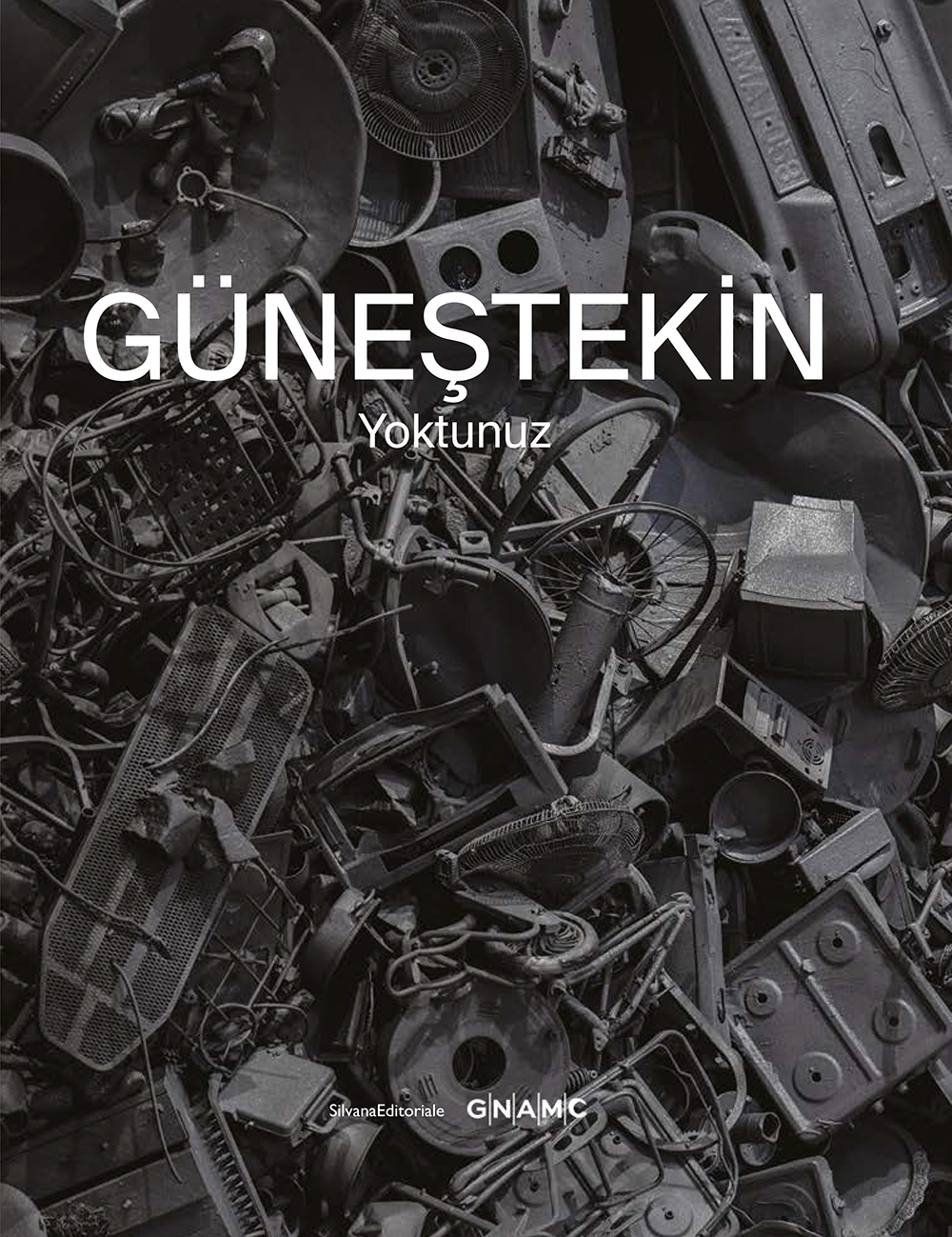Yoktunuz (Never There, Eravate Assenti)
Silvana Editoriale, Milano, September 2025
National Gallery of Modern and Contemporary Art
Galleria Nazionale d’Arte Moderna e Contemporanea (GNAMC)
English, Italian
Design: Silvana Editoriale
224 pages
The book published for the Yoktunuz (Eravate Assenti) exhibition opens with a preface by Renata Cristina Mazzantini, GNANM’s general director. Mazzantini addresses Güneştekin’s politically and socially engaged cultural strategy, as well as his use of an unconventional compositional discipline to produce the theatricality of tragedy. In his curatorial article, The Necessary Angel, Sergio Risaliti articulates the evolving role of art in a disoriented world and how the artist’s works invite viewers to confront global injustice. Risaliti emphasises that the artist reconstitutes the fractured and repairs what is broken through his art, which refers to Walter Benjamin’s Angelus Novus. In her essay, Paola Marino provides insight into the themes and concerns of the artist under seven headings, focusing on the diverse media encompassed by the exhibition, and investigates the artist’s aesthetic sensibilities through these elements. An in-depth interview between the curators and the artist covers several matters, from the flora of his childhood to the artist’s first exhibition, which shows his unique style that brings together forms and mythological references that have become defining elements of his practice; from the influence of digital culture on artistic practices to the emergence of exhibitions as spaces of confrontation and transformation, and creating new connections between materials and meanings; and his expanding projects, most notably the Palazzo Gradenigo, which is currently undergoing restoration. Santa Nastro, editor-in-chief of Artribune magazine, offers a glimpse into the behind-the-scenes developments of the exhibition Yoktunuz, through the installation, Reminiscence Bump, planned to be exhibited at the Mars hall in the museum. The essay illustrates how the artist continues to preserve the power of the installation, which carries the history of tragedies and the weight of suffering, without geopolitical barriers, by transforming the work with great sensitivity into a new construction in response to a general complaint by workers’ unions. Published by the Güneştekin Foundation Publications with the support of Yıldız Holding, the exhibition’s main sponsor, the book features conceptual texts accompanied by installation images of the artist’s works presented alongside the museum’s permanent collection.


